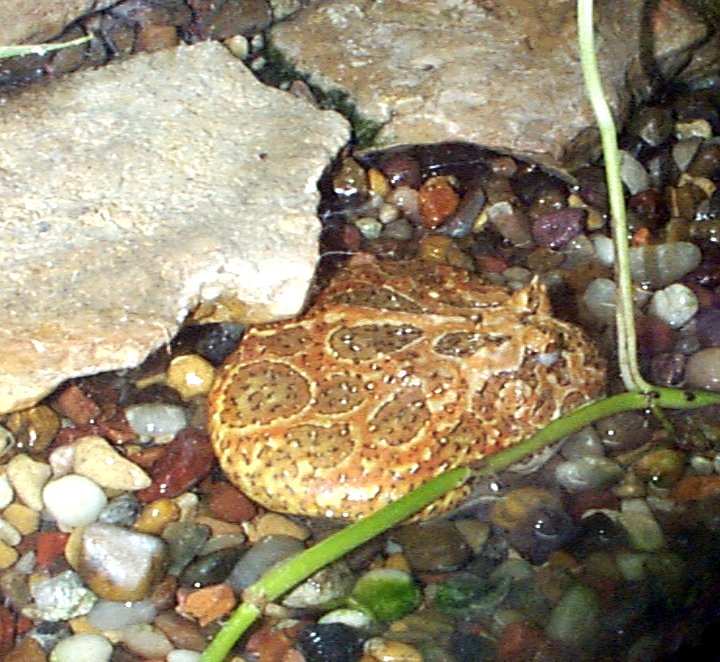GENERAL INFORMATION:
 These
horned frogs are fairly inactive amphibians. The majority of their
time is spent sitting around waiting for prey to approach. They are
usually very passive until it's time to eat, and then they become
very aggressive towards larger animals, and even humans! Their purpose
in life is to eat as much as possible!
These
horned frogs are fairly inactive amphibians. The majority of their
time is spent sitting around waiting for prey to approach. They are
usually very passive until it's time to eat, and then they become
very aggressive towards larger animals, and even humans! Their purpose
in life is to eat as much as possible!
Most of these frogs prefer to live alone in leafy, wet
environments. If a larger horned frog is placed in the presence of
a smaller one, it is very likely that he will EAT the smaller frog.....so
BEWARE!
The normal life expectancy for these frogs is around 6 years.
Some, however, can live anywhere from 12-13 years.
Bell's horned frogs make very popular house pets and they are very easy
to accomodate.